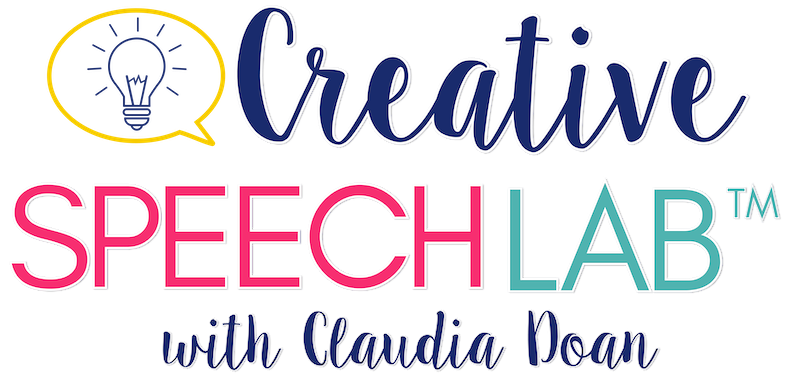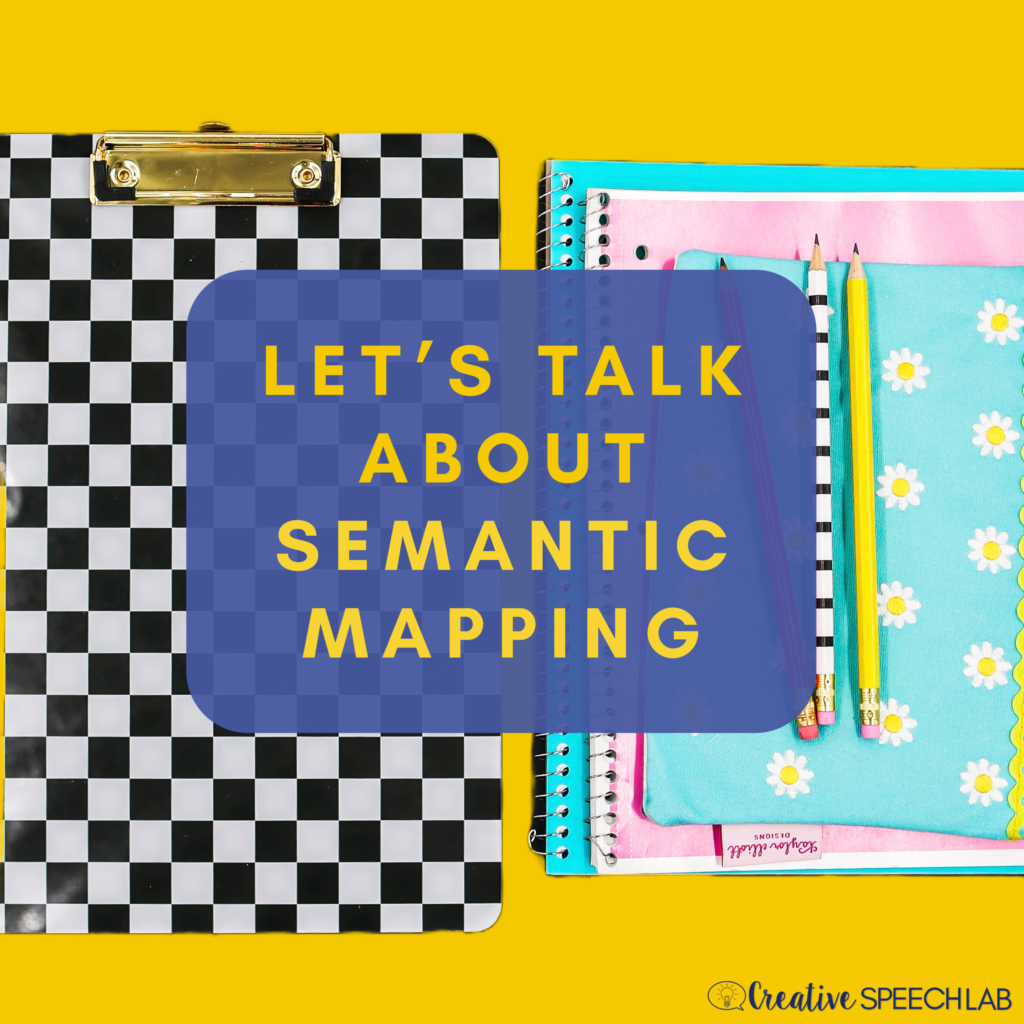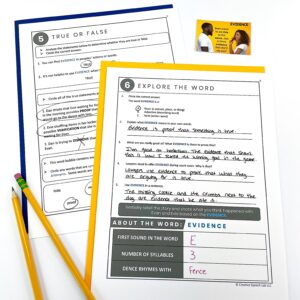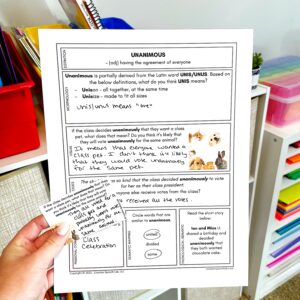As SLPs, we understand that vocabulary words are rarely ever learned in isolation! Semantic webs offer a visually engaging and organized approach to teaching vocabulary.
Why do semantic webs matter?
Semantic webs, also known as semantic maps or word webs, are dynamic visual tools that illustrate the relationships between words and concepts. They provide a holistic view of vocabulary, aiding comprehension and retention while fostering a deeper understanding of word meanings.
Let’s get into specifics!
Semantic webs offer…
Visual Representation:
Visual aids are powerful tools for learning, especially for students with language difficulties or those who are visual learners. Semantic webs offer a clear and engaging representation of vocabulary, enhancing comprehension and retention.
Contextual Understanding:
Understanding words in context is essential for internalizing their meaning. Semantic webs help students grasp the contextual meanings of words by illustrating their relationships with other words and concepts.
Semantic Relationships:
Semantic webs highlight relationships between words, such as synonyms, antonyms, categories, and hierarchies. We work on these all of the time, right? This enables students to see how words are interconnected, enriching their lexical knowledge.
Vocabulary Expansion:
SLPs can use semantic webs to expand students’ vocabulary by introducing related words and concepts. This encourages a more comprehensive understanding of language and facilitates word retrieval!
Now, let’s explore practical ways for SLPs to incorporate semantic webs into their teaching!
Pre-teaching Vocabulary:
Before introducing new words, create semantic webs to preview related words and concepts. This provides students with a framework for understanding and connecting new vocabulary to existing knowledge.
Word Associations:
Encourage students to generate word associations using semantic webs. This activity stimulates critical thinking and helps students make connections between related words.
Vocabulary Expansion Activities:
Engage students in activities like brainstorming related words, identifying synonyms and antonyms, and categorizing words based on semantic relationships through semantic webbing.
Concept Mapping:
Guide students in creating their own semantic webs to map out vocabulary concepts. This hands-on approach promotes active engagement and deeper understanding of word relationships.
Review and Reinforcement:
Use semantic webs for review and reinforcement activities to help students consolidate their vocabulary knowledge. Revisiting semantic relationships between words strengthens retention and understanding. Words are often learned gradually!
In summary…
Semantic webs are invaluable tools for SLPs in teaching vocabulary effectively. By providing visual representations of word relationships, semantic webs enhance comprehension, foster deeper understanding, and promote vocabulary expansion!
Looking for resources that incorporate semantic mapping?
Check out my Tier 2 Vocabulary with Research, Visuals & Mnemonics as well as my Single Page Vocabulary Activities to start using semantic mapping with tier 2 vocabulary right away!





